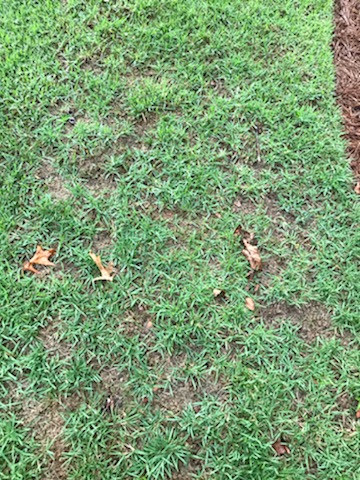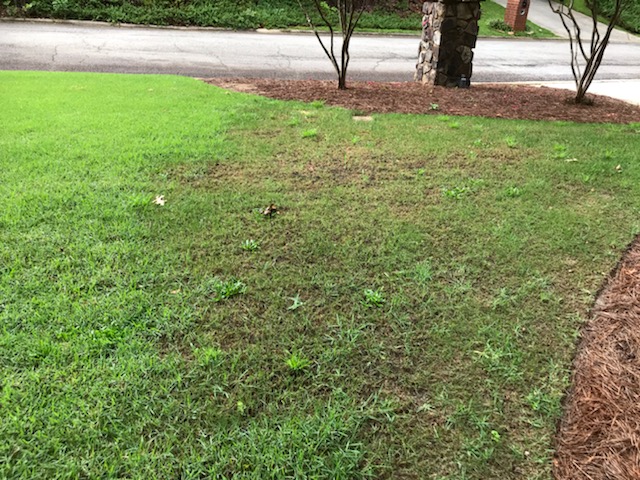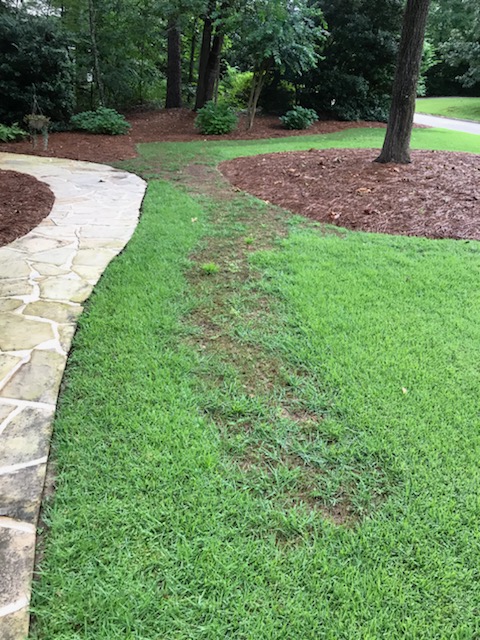I can't see in the picture well enough, but I was thinking about this. If it's not water that's causing the issue, what about pine needles? All of the discoloration in the pictures is next to the trimming. When it rains, is the water by chance carrying pine needles down into the grass, causing it to slowly accumulate and choke out the zoysia?
So, I was searching for pine needles affecting zoysia and found this.
https://homeguides.sfgate.com/grass-shade-around-pine-trees-56007.html
Pine (Pinus) trees grow in most U.S. Department of Agriculture hardiness zones, but zones 2 through 9 have the most favorable conditions for the different varieties of pine. Kansas is the only state with no native pine trees. With such a wide variety of pine trees adapted to the different regions, the grass growing under the trees also varies according to the weather. Soil conditions under the trees are acidic, and grasses that are acid- and shade-tolerant survive best under the trees if they receive some sunlight and a lot of water.
The last sentence got me thinking, is Rye grass tolerant to acidic soil? Adding on to your last comment about why rye grass grows, I just found this.
https://forage.msu.edu/extension/perennial-ryegrass-potential-in-michigan/
Perennial ryegrass grows best on fertile, well-drained soils but has a wide range of soil adaptability. It is tolerant of poorly drained soils and frequently is used in these environments. It tolerates both acid and alkaline oils, with a pH range of approximately 5.0 to 8.3.
When it's time to do the soil samples, I would take a sample of the problem areas, and take a few of the best growing areas to compare against. I am wondering if either pine needles are working themselves into the ground from runoff, or maybe some of the natural acids from the needles are leeching out during rains and then getting into the lawn and affecting the PH levels to make it not suitable for zoysia, but still fine for rye grass to grow. This would explain why re-sodding of zoysia keeps producing the same results in the same locations.










